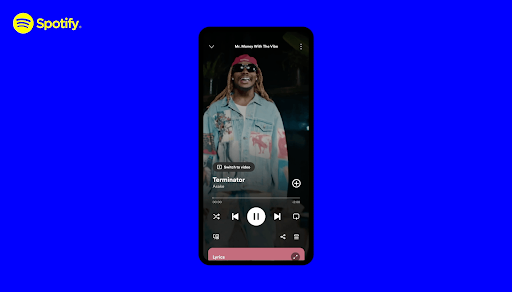Spotify is stepping up its game by introducing music videos to its mobile and desktop apps in certain countries. This new feature seamlessly integrates music videos with the platform's extensive music library, allowing users to switch between audio and video content effortlessly.
As of now, this update is in beta testing and is only available in 11 selected markets, excluding the U.S. The countries included in this initial rollout are Brazil, Colombia, Germany, Indonesia, Italy, Kenya, Netherlands, Poland, Philippines, Sweden, and the UK.
Sten Garmark, Spotify’s VP Global Head of Consumer Experience, explained that these countries were chosen based on various factors such as market size and local content availability. The company plans to expand this feature to more countries in the future.
To access music videos, users need an active premium subscription. Free users will still need to use YouTube to watch music videos.
Here's how it works: instead of searching for music videos separately, users can start playing them directly from the "Now Playing" screen. When listening to a song with an associated music video, users can tap a button labeled "Switch to Video" to transition to the video. The video begins playing from the start and replaces the album artwork. Users can rotate their phone to view the video in full screen.
Unlike merely embedding YouTube videos, Spotify is hosting these videos directly, ad-free. However, the company didn't comment on how royalties for music videos compare to audio streams.
To return to background listening, users can tap "Switch to Audio." If they watch the entire music video, Spotify will automatically play the next song in the queue in audio format.
On desktop, music videos appear in the right-hand column alongside information about the current song and artist. This feature is also available on TVs, including Apple TV, Android TV, Fire TV, gaming consoles, and select smart TV models.
Initially, only a limited number of music videos will be available, but Spotify has secured distribution rights to add more in the future. Garmark noted that they aimed to include a diverse range of genres and artists in the launch.
This release comes at an interesting time, following Universal Music Group's decision to remove its songs from TikTok due to a royalty dispute. With music videos, Spotify is expanding its video content beyond Clips and Canvas, providing users with more engaging experiences.
Additionally, this move puts Spotify on par with other streaming services like YouTube Music and Apple Music, both of which offer music videos, although switching between audio and video content isn't as seamless.

